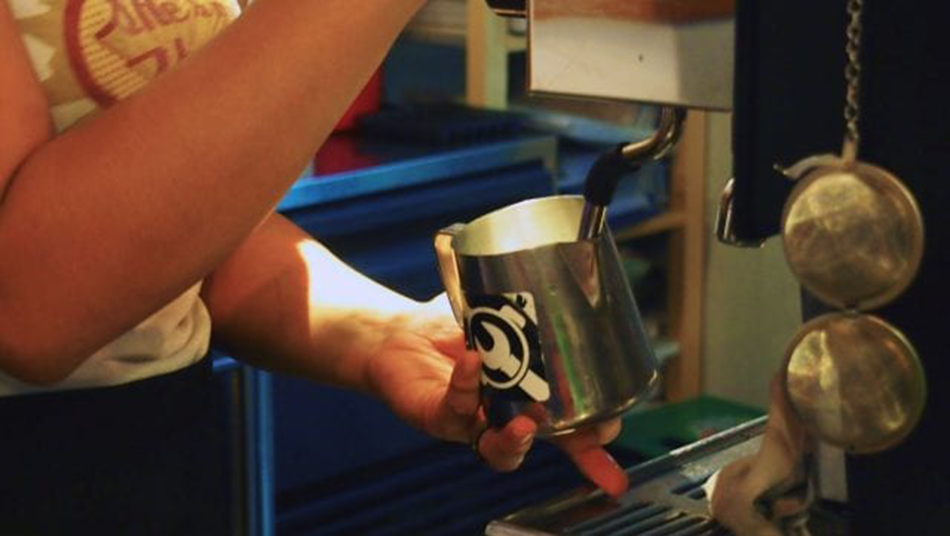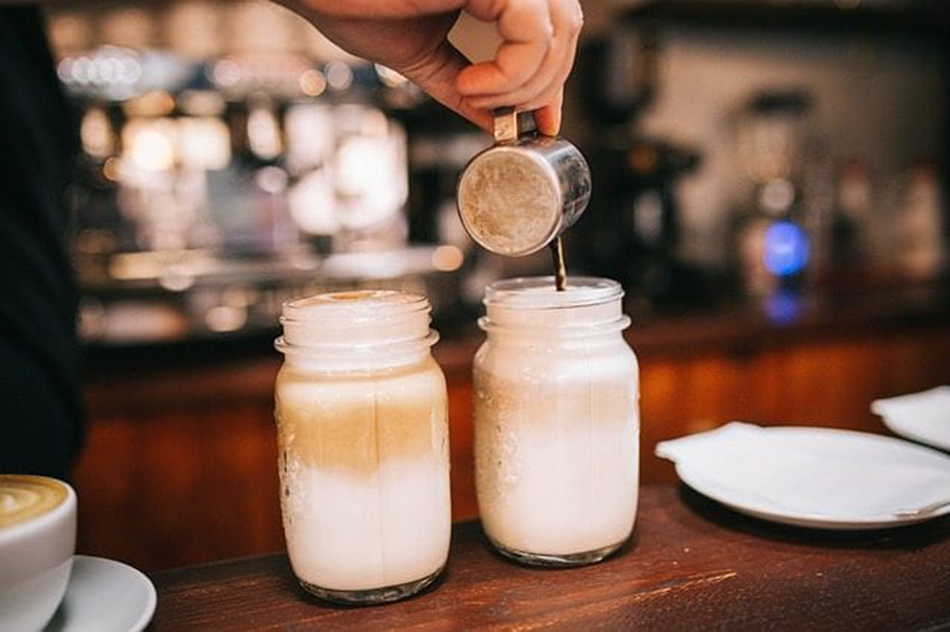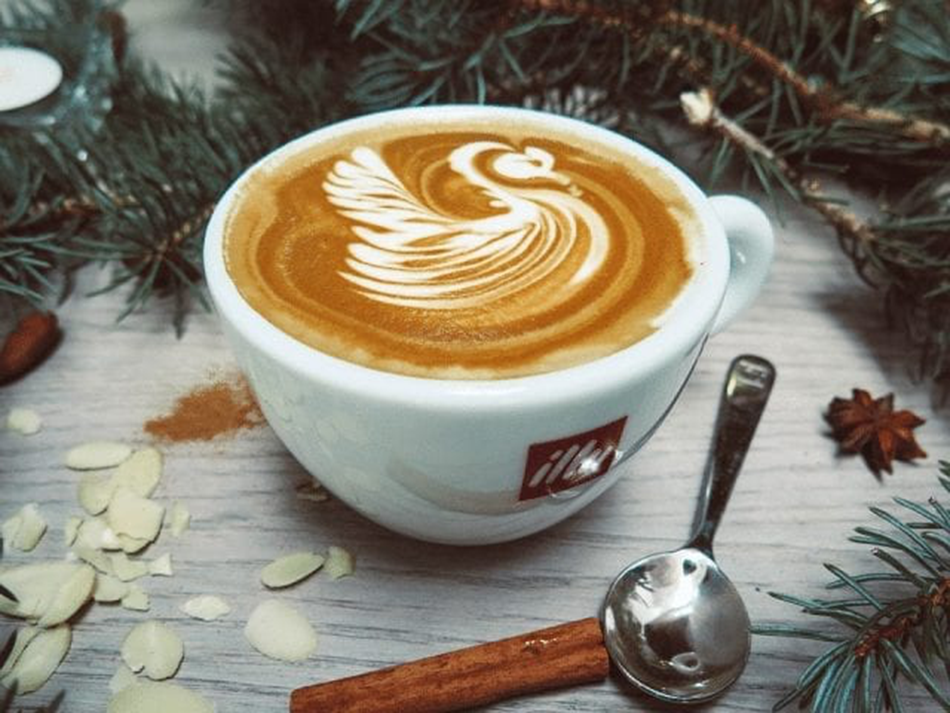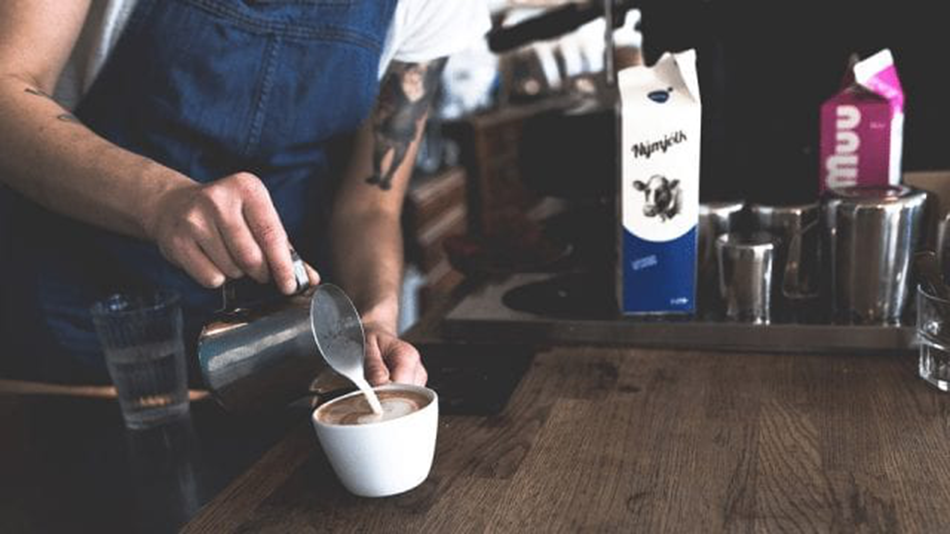Milk steaming and latte art are two essential skills for any barista. Neither are easy to master, especially when you first start, but I’ve got good news for you: choosing the right milk pitcher can significantly help.
There are so many different milk jugs on the market. They vary in color, design, size, shape, spout type, weight… And they’re all designed and distributed by different brands across the world.
So, when faced with this much choice, how do you know which milk jug is best? Well, that depends on your needs.
THE BASIC REQUIREMENTS
Let’s start with the most basic thing to look for when choosing a milk jug: width.
First and foremost, you want a jug that’s wide enough to allow a “whirlpool” effect when you steam milk. This whirlpool will break down your bigger bubbles and create micro-foam.
What is micro-foam, you ask? Micro-foam is produced when the milk is well-aerated and evenly heated, producing velvety smooth, silky, and shiny milk. This milk not only tastes great but also has the optimum texture for free-pouring latte art designs.
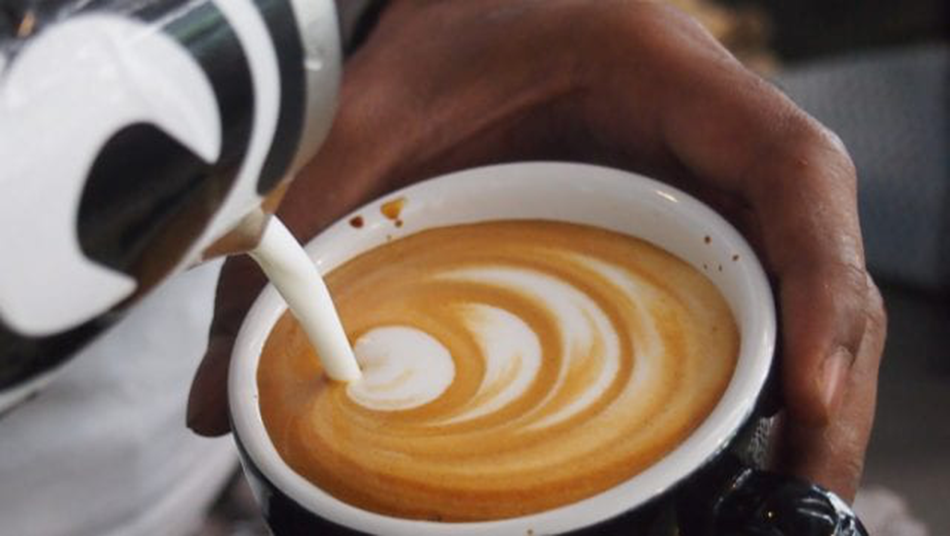
SIZE
Most milk jugs are one of two sizes, 12 oz and 20 oz. However, it’s possible to find even smaller or larger pitchers, should your coffee bar need them. Generally speaking, the 12 oz and 20 oz jugs should have similar base sizes, so width shouldn’t come into that choice.
The most important thing you want to consider when choosing your milk jug size is how much milk you’re actually going to need for your beverage. When it comes to milk steaming and frothing, you don’t want your pitcher to be too empty or too full. If it’s too empty, you won’t be able to submerge your steam wand tip into the milk for good aeration. If it’s too full, the milk will overflow when you’re steaming.
An ideal amount of milk would sit just below the base of the spout, about one-third of the way up the jug.
(A small pitcher being used for chocolate.)
MATERIAL
You want a pitcher that is made of high-quality stainless steel, as this will keep the temperature consistent as you steam the milk. That being said, when you’re steaming milk to approximately 160°F/70°C, that jug’s going to heat right up with the milk. If you don’t feel comfortable with the heat of a stainless steel pitcher, you can always look for one with Teflon coating to protect your fingers and hands.

A barista pours latte art from a Teflon-coated milk pitcher.
SPOUTS
While seasoned baristas and professionals could probably churn out flawless latte art with any milk jug, some designs are easier to free pour using certain spout shapes. This makes these jugs easier to learn and coach with – and also to compete with.
Hearts and tulips are where most people start their latte art journey. But simplify these a little, and you’re pouring “blobs”: foam that pours out nicely, smoothly, and in more or less rounded forms. When you’re just starting out and getting the feel of things, the best pitchers to produce these blobs would be classic spout pitchers. They allow the foam to flow out evenly in a relatively rounded shape.
Rounded spout (left) vs sharper spout (right). Credit: Sam Koh
Rosettas will be hard with these wide-shaped spouts, but a slowsetta (which has fewer and thicker leaves) is an option. And they also work well for waves!
On the other hand, traditional rosettas and elaborate latte art (such as swans and peacocks) suit narrower, sharper spouts. This gives you more control for detailed designs.
There are plenty of classic-styled pitchers which are versatile enough for a variety of pours, such as Incasa or Joe Frex. If you want to work on the evenness of rounded pours, pitchers by Motta have a more curved spout for your hearts and tulip layers. Barista Gear pitchers offer thinner and sharper spouts for complex latte art pours.
Swan latte art: this would be easiest to pour with a thin, pointed spout.
HANDLE OR NO HANDLE?
Whether or not you want a handle depends on how you like to hold the pitcher when you pour. Some find that a handleless pitcher gives them more flexibility when pouring. It can also allow for a better grip towards the top of the pitcher, giving you more control and precision with the spout.
On the other hand, you need to remember that you’re steaming milk to pretty high temperatures. If you go for a pitcher without a handle, I recommend getting one with a well-insulated wrap.
A barista pours latte art from a jug with a handle.
We’ve covered a lot of points in this article, but ultimately the most important thing when choosing a milk jug is whether or not you’re comfortable with it. It has to have the right weight, balance, and heat control for you. You should also pay attention to how much control you have when pouring. How you hold the pitcher, when you need to use more pressure and when you taper off – these should all be taken into account.
What works for one barista may not work for the next. So try different pitchers, find your favorite, and hone your skills. Getting the right milk jug is one step on the route to improving your milk steaming, latte art, and overall barista skills.
Post time: Jun-18-2020
